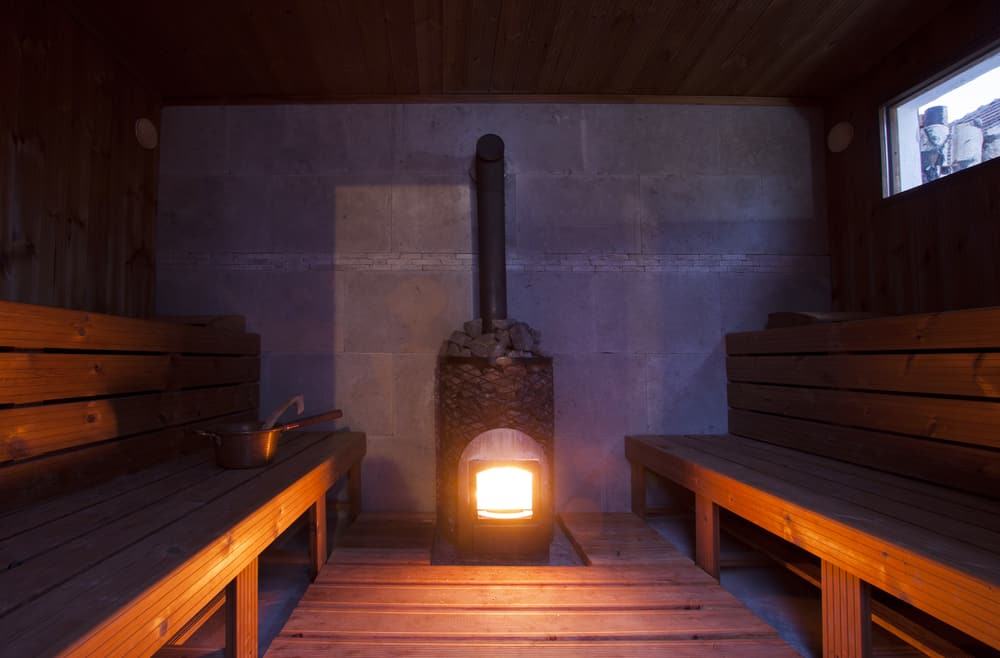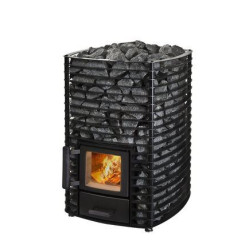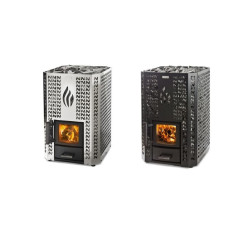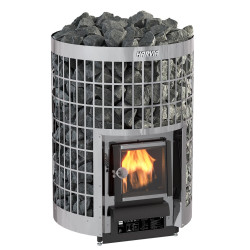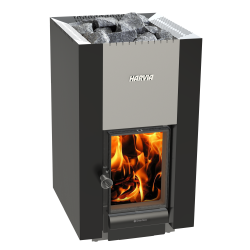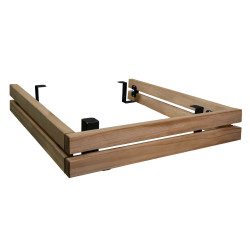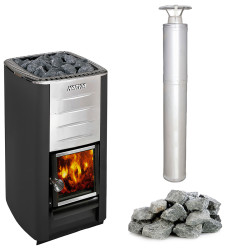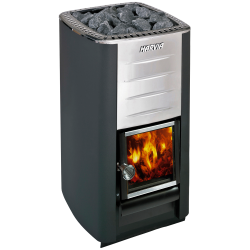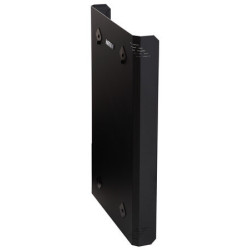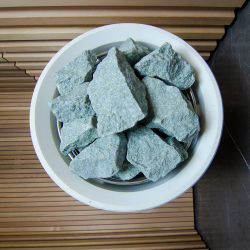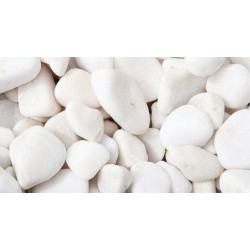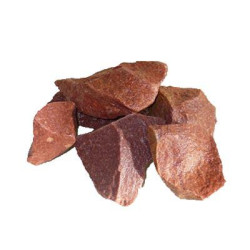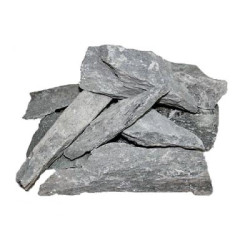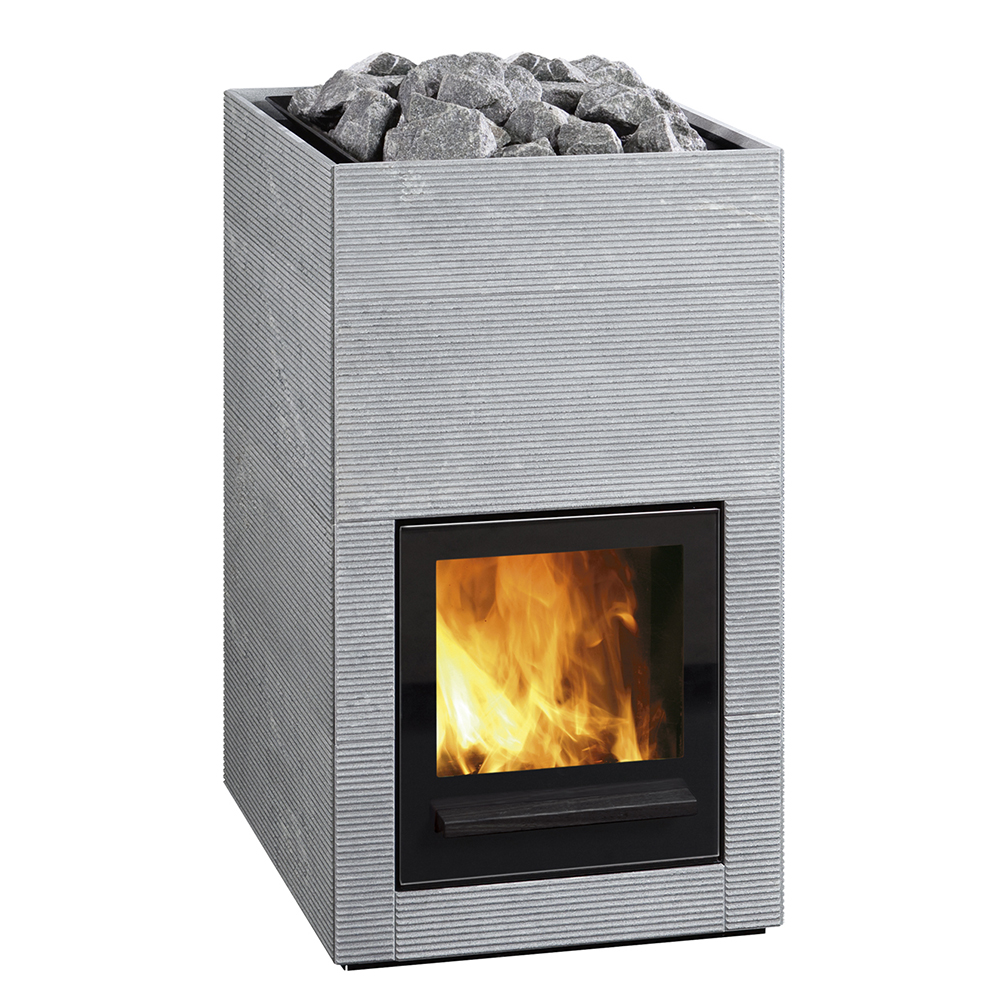
Advantages of a wood-burning sauna heater:
• Heater stones can be heated to a very high temperature;
• Very simple operation and construction;
• It is part of the image of a traditional sauna.
Disadvantages of a wood-burning sauna heater:
• Sauna heating takes time;
• Stricter fire safety requirements are applied;
• Chimney, firewood and heater cleaning are additionally required.
The principle of operation of a wood-burning sauna heater is very simple - the heated stones of the wood-burning heater heat the room. They are mostly installed in log saunas and houses. The power of the wood-burning heater depends on the size of the sauna. The larger the room, the more powerful the heater will be. How to calculate the power of the required heater? After calculating the volume of the sauna room, 1.5 should be added, that is, heat is lost due to the swinging door. If there are windows and other non-insulated surfaces, we multiply the area of these surfaces by 1.2 and add it to the total volume. We have received a number according to which it is possible to choose the right heater for this particular room. In the characteristics of the sauna heater, this number should be in the middle, within the power limits specified in the characteristics of the heater. A properly selected and properly lit sauna heater should heat up the sauna in about one hour. When choosing a wood-burning sauna heater, you need to pay attention to several important aspects: quality, economy, type of heater fuel (internal or external) and the amount of stones.
How long it will last depends on the quality of the wood-burning heater. A quality heater means sufficient metal thickness, quality metal and good construction. The wall thickness of the sauna heater should be at least 5 mm. A heater with thinner walls will burn out faster and will last much shorter than a high-quality one with sufficient thickness. Not only the thickness of the metal, but also the composition is very important. Can be very thick, but poor quality metal that will burn very quickly. The metal of the heater must be of good quality and new, because the old one will burn faster. In addition, there is a high probability of burning the entire sauna. The service life of the heater also depends on how it will be fired. The sauna heater should be heated so that the metal is red, but not orange.
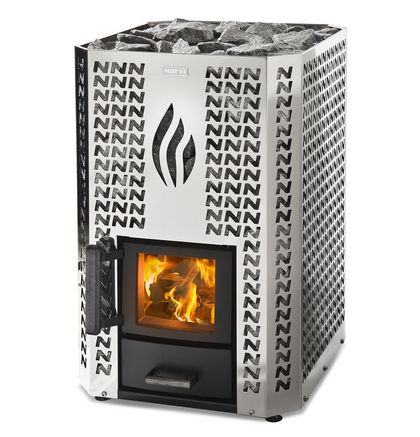
The more stones in the heater, the better the quality of the steam and the longer the heat will be, but it will take longer to heat to the right temperature. The stones of the sauna heater are usually heated up to 550°C in the lower layer, and up to 350°C in the upper layer. Pouring water on the stones heated in this way produces good and abundant steam. Experts recommend that it is better to purchase stones for the sauna, rather than trying to collect them from nature. Because using the latter is dangerous due to the possibility that it may explode from the heat. The stones offered in the trade are not affected by heat and cold, not affected by contact with the air, they are solid rocks. On the market, you can find a wide variety of stones for sauna heaters, but the most important thing is that they efficiently accumulate and give off heat and do not split due to sudden temperature changes. One of the most popular and commonly used stones in saunas is soapstone. After purchasing the stones for the sauna heater, they should not be placed in any way, but according to a certain methodology. They are stacked according to size - larger stones are placed at the bottom, and smaller stones are placed at the top. In addition, gaps should be left between them for better air circulation.
The economy of the sauna heater depends on the design. Harvia and Narvi heaters are generally considered the most economical heaters. The construction of the Harvia heater is made in such a way that the fire at the front of the fuel rises up through the sides of the heater, thus enveloping the stones, and exits the chimney. But Narvi's technology is even more efficient. From the kindling, the fire goes directly into two pipes, which are lined on all sides with stones. Such a methodology helps to make the burning process more efficient, reduce the amount of used firewood and reduce air pollution.
As for the safety railings of the heater, they do not always need to be built. If the sauna heater is walled with tiles, the safety railing is not necessary. However, it is recommended to make a barrier around the metal heater at a distance of 50 cm. And around the metal, well covered with stones, make a fence at a distance of about 30 cm.
It happens that novice bathers have the question of whether the stones of the wood-burning sauna heater need to be maintained in any way, or whether they need to be washed and replaced. So, over time, these stones get covered with limescale, which is really advisable to wash. It's really easy to do. While the stones are still warm, soak them in a solution of citric acid or vinegar. Then this limescale will clean and wash off very easily. At the same time, you can check the stones - whether they are crumbling. These should be replaced with new ones and it is best to do it every year. It is not recommended to wash the stones with scrubbing agents, because the used stones are porous, so they will absorb some of the chemical preparations. And when they are used again, these chemical particles will vaporize and enter the human body through the mucous membrane, eyes or lungs.
Before purchasing a sauna heater, it is always best to consult with specialists in this field. They will definitely help you find the best solution, which sauna to install, which heater to buy and how to use it most efficiently.

